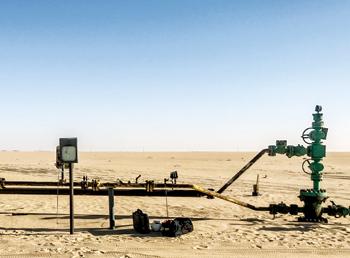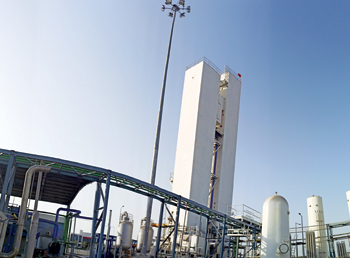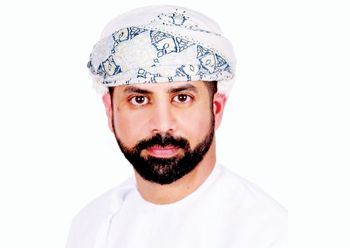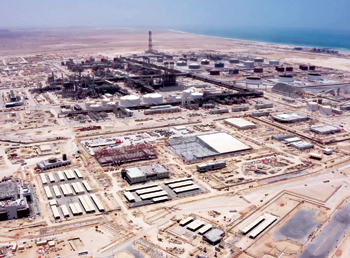
 Gas flow measurement at remote wells can be challenging
Gas flow measurement at remote wells can be challenging
Productivity highly depends on comprehensive and effective process control. Carolina Stopkoski and Jörg Sacher from FLEXIM explain how non-invasive ultrasonic flow measurement technology can be used to boost oil production
Producing hydrocarbons requires absolute caution and competence; large quantities of material and energy have to be controlled in a completely safe manner. This makes safety the number one priority.
Safe and efficient operations rely on process control, which relies on effective and accurate measurements. In addition to safety and efficiency, sustainability is another driver for this demand for measurement and control. Environmental concerns mean there are strict regulations on the monitoring of plants and their operations.
According to Carolina Stopkoski, Head of Market Management for Oil and Gas, FLEXIM: "When mature field production starts to decline, operators are forced to re-think how they operate and use new and advanced technologies to extract every drop of their ‘black gold’ from the ground safely and economically.
 |
Non-invasive flow measurement with clamp-on ultrasonic technology according to |
"However, one important measure that is often overlooked is the condition and applicability of ageing instrumentation and how it can impact optimisation strategies that rely on real-time data acquisition, such as enhanced oil recovery (EOR)."
As assets mature and reach brownfield status, flowmeters and other process control instrumentation become obsolete and inaccurate. To optimise and validate empirical EOR calculations and models, asset managers and production teams are faced with the need to evaluate the performance, suitability, and applicability of existing instrumentation, identify new required measuring points and process conditions while avoiding process interruptions or defer production at all costs.
MEASURING FROM THE SAFE SIDE
Clamp-on ultrasonic technology has always been preferred when the medium being measured is reason enough to avoid opening the pipe, if at all possible. Therefore, it is the method of choice when it comes to measuring precious and hazardous media under the most challenging process conditions and in the harshest environments.
FLEXIM’s clamp-on ultrasonic flowmeter system, FLUXUS, is therefore found throughout the entire value chain of the oil and gas industry, from the well to consumers, both in liquid and gas flow applications.
Measuring from the outside of the pipe means measuring from the safe side. Installation and commissioning of an ultrasonic flowmeter does not require opening of the pipe and, therefore, the availability of the plant is unaffected.
 |
Permanent gas flow measurement on an offshore platform |
Since the transducers do not come in direct contact with the medium, they are not subject to wear and tear. This external measurement works independently of pressure changes in the pipe and does not cause any pressure loss or risk of leakage.
An additional advantage of the acoustic measurement lies in its extreme dynamic range, independent of the flow direction: ultrasonic flow measurement is inherently bidirectional and active even at very low flow conditions.
DRAWBACKS OF CONVENTIONAL FLOW MEASURING TECHNOLOGIES
Although, nowadays, it is widely accepted that a modern, small smartphone is by far a more powerful tool for communication and information than a head secretary’s impressive telephone in the 1970s, it seems that in many industries, the same insight hasn’t taken place when it comes to process instrumentation.
In the oil and gas industry, differential pressure (DP) measurements such as orifice plates and venturi tubes are still standard measuring technologies. The first drawback of this kind of measurement is inherent to its measuring principle: It relies on a pressure difference, that is, a pressure loss affecting the efficiency of the plant.
Further, and even more significant disadvantages, are common to all wetted instrumentation: Its installation requires opening of the respective pipe and, therefore, interruption of operation. In addition, wetted instrumentation is subject to wear and tear through abrasion or scaling, leading to measuring drift and causing a high maintenance effort, also affecting the availability of the plant.
ONSHORE AND OFFSHORE, PORTABLE AND STATIONARY
In many oil and gas applications worldwide, FLEXIM’s clamp-on ultrasonic measuring systems have successfully proven their excellent suitability and demonstrated their advantages. Here are some examples:
Gas injection, gas lift metering and optimisation in remote onshore assets can be a challenging task. In most cases, some field instrumentation is available, but it is often outdated and inaccurate and, therefore, not trusted by the operators.
Traditional well testing packages, test and production separators only provide indication of the totalised gas coming out of the oil but provide very little indication of which well to optimise and at what specific gas injection rates net oil production is increased. Therefore, having the means to test injected gas lines during normal operations is imperative.
FLEXIM’s hazardous area rated the FLUXUS G608 portable gas flowmeter as the perfect tool for the job for high well count in remote locations where operators are looking to test multiple wells within their gas injection/lift network without having to worry about power supply, weight limitations or having to deploy different pipe size meters to the field.
The FLUXUS G608 portable meter’s ease of installation enables operators to start gathering accurate and reliable flow rate data at standard conditions in less than five minutes.
Equipped with two flow channels, inputs for pressure and temperature, an integrated data logger with a serial interface, and a battery life of up to 25 hours; the FLUXUS G608 portable gas flowmeter is the meter of choice for use in challenging environments.
FLOW SURVEY AND RETROFITTED REPLACEMENT IN GAS LIFT NETWORK
At an offshore field in the South Chinese Sea, production started back in 1970 with 500 reservoirs, more than 300 well strings, 30 platforms/jackets, 5 production separation platform complexes, and 185 offshore pipelines.
Over the years, field reservoir pressure declined, meaning that nowadays upwards of 80 per cent of the existing producer wells are gas-lifted. Six compressors supply lift-gas to 260 gas-lifted wells and, therefore, gas balance and allocation is extremely important.
Historically, gas going into the lifting wells was controlled by the size of the orifices in the downhole operating valve. As the well conditions changed, inappropriate plate sizes caused lifting instability and field operators were not able to optimise the field or validate empirical models. The platforms did not have the means to evaluate the performance of the existing meters and balance gas volumes within the system. Well and field-wide gas-lift optimisation was, therefore, not possible.
"FLEXIM demonstrated the capability and accuracy of its FLUXUS ultrasonic clamp-on flowmeters in various field evaluation trials. Following the positive results obtained during testing, field operators decided to use the clamp-on meters to do a full flow audit of the gas lift network," says Jörg Sacher, Press and Public Relations, FLEXIM.
A list of more than 60 measurement points was drawn up between different platforms. Two sets of portable FLUXUS G608 flowmeters were deployed in conjunction with field technicians to enable simultaneous measurements.
Based on the results of the survey, the operator had evidence that some DP flowmeters had drifted significantly over time causing process settings to be incorrect and resulting in over-injection.
With the new data collected from the flow audit, the operator was now able to better balance their gas lift system and carry out optimisation strategies in individual wells. With, the right dose of natural gas per well, excess gas was then exported for sale, increasing both net oil production and gas sales.
Based on the huge success of the flowmeter survey, the operator now equips the measurement points, previously served with differential pressure meters, with permanent FLUXUS clamp-on ultrasonic flowmeters.
CONCLUSION
FLEXIM’s non-invasive ultrasonic measuring technology delivers convincing solutions to effectively increase productivity. When safety is paramount and downtime is not an option, the best way is to measure from the outside of the pipe.






















































































